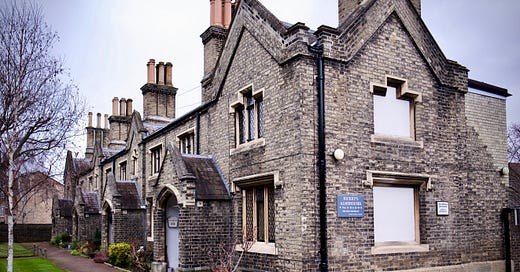Gone are the times when prominent almshouse benefactors supplied those in need of housing with land and well-constructed traditional homes, around fairy tale courtyards, entered through gates from adjoining roads.
Dignity lost.
Today—and for the past several years—the conversation around needed housing usually questions its default, uninspiring style, and the cost and quality of materials used .
As regulatory barriers to the construction of multifamily units—especially “affordable” units—recedes, should the level of design scrutiny also fall away?
X, formerly known as Twitter, presented the following missive from architectural sage Steve Mouzon this morning, in which he re-upped his “Affordability With Dignity” essay, readable here.
Dignity found.
Steve’s post reminded me of a similar tone that another architect, Laurence Qamar, struck in an essay a few years ago.
In 2019, Qamar noted that some American planners and officials had fallen prey to a sentiment that “as long as the building is affordable and provides more housing during this crisis, they ‘do not care if it’s ugly.’” He argued for a “contextualism based on human proportion.”
Mouzon and Qamar make sense, and I wondered if their point of view has gained any footholds.
When in doubt, ask AI.
So I inquired of ChatGPT 4 and its imaging component DALL-E 3 what affordable housing should look like in three cities I know well, depicted left to right, below. Seattle, Santa Fe, and London.
I see some local context in three examples—and some familiar vernacular themes.
Otherwise, I see stereotypes of multifamily development gleaned from what the internet offered to ChatGPT, whose architectural skills are dubious at best,



One thing is clear.
It’s time for a hive-mind reboot if Mouzon’s “affordability with dignity” or Qamar’s “contextualism based on human proportions” are ever to carry the day.






